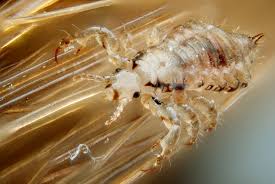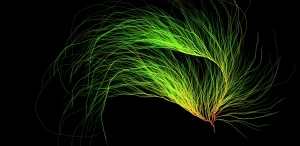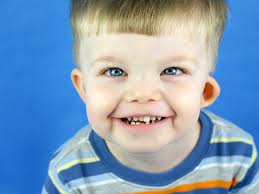Head Lice
Below is a comprehensive, structured report on Head Lice covering its definition, history, clinical features, causes, risk factors, complications, diagnosis, treatment options, prevention strategies, global statistics, recent research, and additional insights. This report is designed to be informative for both the general public and healthcare professionals.
1. Overview
What is Head Lice?
Head lice are tiny, wingless insects (Pediculus humanus capitis) that infest the scalp, feeding on human blood and causing irritation and itching. They are a common parasitic infestation, particularly among school-aged children.
Detailed Definition
Head lice are obligate ectoparasites that live on the human scalp. They attach to hair shafts using claw-like appendages and feed by piercing the skin to extract blood. The infestation is known medically as pediculosis capitis. While head lice do not transmit diseases, they cause significant discomfort, itching, and social stigma.
Affected Body Parts/Organs
- Scalp and Hair: The primary sites of infestation.
- Ears and Neck: Lice and nits (eggs) can also be found on hair in adjacent areas.
Prevalence and Significance
Head lice are highly prevalent worldwide, especially in settings where close contact is common, such as schools and childcare centers. Although infestations are not life-threatening, they are significant due to the impact on quality of life, potential for widespread outbreaks, and the economic and social burden associated with treatment and school absenteeism.
2. History & Discoveries
When and How Were Head Lice First Identified?
- Historical Descriptions:
Head lice have been recognized since ancient times, with evidence of lice infestations documented in Egyptian mummies and early medical texts. - Modern Identification:
Over the centuries, scientific advances in microscopy allowed detailed observation and classification of lice, solidifying our understanding of their biology and life cycle.
Who Discovered It?
- Pioneering Contributions:
While head lice have been known throughout history, early entomologists and physicians such as Carl Linnaeus contributed to the scientific classification of lice. No single person is credited with “discovering” head lice, as their existence has been known for millennia.
Major Discoveries and Breakthroughs
- Life Cycle Elucidation:
Research clarified the head lice life cycle, including the identification of nits (eggs), nymphs, and adult stages. - Transmission Understanding:
Studies established that head lice spread primarily through direct head-to-head contact, rather than through inanimate objects. - Treatment Advances:
Over time, various treatment modalities have been developed, ranging from mechanical removal (combing) to chemical treatments (pediculicides).
Evolution of Medical Understanding
Medical and public health understanding of head lice has evolved from simple observation to targeted control measures. Advances in diagnostic techniques, treatment strategies, and public health policies have helped manage infestations, although resistance to common pediculicides remains a challenge.
3. Symptoms
Early Symptoms vs. Advanced-Stage Symptoms
- Early Symptoms:
- Mild scalp itching or irritation
- Awareness of small moving insects in the hair
- Advanced-Stage Symptoms:
- Intense itching, often worsening at night
- Visible nits (lice eggs) attached to hair shafts, typically near the scalp
- Redness or excoriations on the scalp due to scratching
Common vs. Rare Symptoms
- Common Symptoms:
Itching and the presence of nits are the most frequent signs of head lice infestation. - Rare Symptoms:
Secondary skin infections (impetigo) can occur from excessive scratching, but these complications are less common.
How Symptoms Progress Over Time
In an untreated infestation, symptoms typically begin as intermittent itching that intensifies over time as the number of lice increases. Continuous scratching may lead to skin abrasions or secondary bacterial infections, while persistent infestation can contribute to significant discomfort and social distress.
4. Causes
Biological and Environmental Causes
- Biological Causes:
The infestation is caused by the parasitic insect Pediculus humanus capitis, which requires human blood to survive and reproduce. - Environmental Causes:
Close contact in crowded settings (e.g., schools, daycare centers) facilitates the spread of head lice. Warm, humid environments may also promote survival and transmission.
Genetic and Hereditary Factors
- Host Factors:
Although head lice infestations are not inherited, genetic factors such as hair texture and scalp environment may influence susceptibility.
Known Triggers or Exposure Risks
- Direct Contact:
Head-to-head contact is the primary mode of transmission. - Sharing Personal Items:
Sharing combs, hats, or bedding can also contribute, though less commonly than direct contact.
5. Risk Factors
Who Is Most at Risk?
- Age:
Children, particularly those between 3 and 11 years old, are at the highest risk due to frequent close contact at school. - Gender:
Both genders are affected equally, though some studies suggest girls might have slightly higher prevalence due to longer hair. - Lifestyle:
Close-knit communities and environments where children interact closely increase the risk.
Environmental, Occupational, and Genetic Factors
- Environmental:
Crowded living conditions and inadequate hygiene practices can heighten risk. - Occupational:
Occupations involving close personal contact (e.g., teachers, daycare workers) are at increased risk of exposure. - Genetic:
No direct genetic factors are known to cause infestations, but individual scalp characteristics may play a minor role.
Impact of Pre-existing Conditions
- Pre-existing Skin Conditions:
Those with skin conditions that compromise the scalp’s integrity might be more prone to secondary infections from scratching.
6. Complications
What Complications Can Arise from Head Lice?
- Secondary Infections:
Scratching can lead to skin abrasions and secondary bacterial infections, such as impetigo. - Social and Psychological Effects:
Infestations may lead to social stigma, embarrassment, and anxiety, particularly in children. - Transmission of Infestation:
Ongoing infestations can spread rapidly within communities, causing public health challenges.
Long-term Impact on Organs and Overall Health
Head lice infestations themselves do not typically impact internal organs or overall systemic health. However, complications like secondary infections can require medical treatment and may lead to temporary systemic symptoms if severe.
Potential Disability or Fatality Rates
Head lice infestations are not life-threatening, and fatalities are extremely rare. The primary concern is discomfort and potential social disruption rather than direct physical disability.
7. Diagnosis & Testing
Common Diagnostic Procedures
- Visual Examination:
Direct inspection of the scalp and hair, preferably with a fine-toothed comb, is the standard method. - Use of a Magnifying Glass:
A magnifier or specialized lice detection comb can aid in identifying nits and live lice.
Medical Tests
- No Specific Laboratory Test:
Diagnosis is primarily clinical; there are no blood tests or imaging studies for head lice. - Occasional Microscopy:
In uncertain cases, microscopic examination of hair samples may be used.
Early Detection Methods and Their Effectiveness
Early detection through regular screening in schools and at home is highly effective. Prompt identification allows for immediate treatment, preventing spread and complications.
8. Treatment Options
Standard Treatment Protocols
- Over-the-Counter Pediculicides:
Shampoos, creams, or lotions containing pyrethrins or permethrin are commonly used. - Prescription Medications:
In cases of resistance or severe infestation, prescription treatments (e.g., malathion, ivermectin) may be necessary. - Mechanical Removal:
Wet combing with a fine-toothed comb is recommended to physically remove lice and nits. - Environmental Decontamination:
Washing clothing, bedding, and personal items in hot water to eliminate lice and prevent re-infestation.
Medications, Surgeries, and Therapies
- Medications:
Topical insecticides are the primary treatment. Oral medications like ivermectin may be used in resistant cases. - Non-Pharmacologic Approaches:
Regular combing and cleaning of personal items are essential adjuncts to chemical treatments. - Emerging Treatments:
Research continues into new formulations and alternative therapies (e.g., herbal treatments) to overcome resistance.
Emerging Treatments and Clinical Trials
- New Pediculicide Formulations:
Ongoing studies are investigating novel insecticides and combination therapies to address treatment resistance. - Natural and Alternative Remedies:
Clinical trials are evaluating the efficacy of essential oils and other natural products as potential treatments.
9. Prevention & Precautionary Measures
How Can Head Lice Be Prevented?
- Avoid Direct Head-to-Head Contact:
Educate children and parents about minimizing head-to-head contact during play and at school. - Avoid Sharing Personal Items:
Discourage the sharing of combs, hats, and bedding. - Regular Screening:
Periodic checks in school or daycare settings help detect infestations early. - Hygiene Practices:
Routine hair washing and combing can help reduce the likelihood of infestation.
Lifestyle Changes and Environmental Precautions
- Educate and Inform:
Public health initiatives in schools and communities to raise awareness. - Environmental Cleaning:
Regular cleaning of items that come into contact with hair (e.g., pillows, hats) is advised. - Community Involvement:
Coordinated efforts between schools, parents, and healthcare providers can help control outbreaks.
Vaccines or Preventive Screenings
- Vaccines:
There are no vaccines for head lice. - Preventive Screenings:
Regular visual screenings in schools and homes are the most effective preventive measure.
10. Global & Regional Statistics
Incidence and Prevalence Rates Globally
- Prevalence:
Head lice infestations are common worldwide, with particularly high prevalence in school-aged children. Estimates vary, but outbreaks are seen globally, regardless of socioeconomic status. - Regional Trends:
Developed and developing countries both experience infestations, with higher rates in settings where close contact is common.
Mortality and Survival Rates
- Mortality:
Head lice infestations are not associated with mortality. - Morbidity:
The main issues are discomfort, social stigma, and potential secondary infections rather than direct health impacts.
Country-wise Comparison and Trends
- Developed Countries:
Routine screening and treatment protocols help manage infestations effectively. - Developing Countries:
Limited access to treatment and awareness can lead to higher infestation rates, although the health impact remains non-fatal.
11. Recent Research & Future Prospects
Latest Advancements in Treatment and Research
- New Insecticide Formulations:
Research into alternative pediculicides to address resistance issues is ongoing. - Resistance Monitoring:
Studies continue to monitor patterns of resistance to common treatments like permethrin. - Alternative Therapies:
Investigations into natural remedies and non-chemical treatments, such as essential oils and physical removal techniques, are in progress.
Ongoing Studies and Future Medical Possibilities
- Clinical Trials:
Trials evaluating the safety and efficacy of new topical agents and combination therapies. - Genomic Studies:
Research into the genetic basis of resistance in head lice may lead to targeted treatment strategies. - Digital Health Tools:
Emerging applications include digital tools for tracking and managing outbreaks in school settings.
Potential Cures or Innovative Therapies Under Development
While head lice are unlikely to be “cured” permanently due to their ease of transmission and re-infestation, advances in treatment aim to make eradication more efficient and reduce recurrence rates.
12. Interesting Facts & Lesser-Known Insights
Uncommon Knowledge About Head Lice
- Ancient History:
Evidence of head lice infestation has been found in ancient Egyptian mummies, highlighting the long history of this parasitic problem. - Host Specificity:
Head lice are adapted exclusively to humans and do not survive on other animals, which is why infestations remain confined to human populations. - Non-Disease Carriers:
Despite the discomfort and social stigma, head lice do not transmit diseases.
Myths and Misconceptions vs. Medical Facts
- Myth: “Poor hygiene causes head lice.”
Fact: Head lice infestations occur in all socioeconomic groups and are primarily transmitted through direct head-to-head contact. - Myth: “Lice can jump or fly.”
Fact: Head lice cannot jump or fly; they spread only through close contact or sharing personal items. - Myth: “Home remedies are always effective.”
Fact: While some alternative treatments may help, evidence-based treatments are recommended to effectively eradicate head lice.
Impact on Specific Populations or Professions
- High-Risk Populations:
School-aged children are most commonly affected due to close physical contact. - Occupational Impact:
Teachers and childcare workers often face challenges in managing outbreaks, underscoring the importance of preventive education and regular screening.
References
- – Provides extensive data on head lice epidemiology, treatment guidelines, and prevention strategies.
- – Offers global perspectives and statistics on head lice infestations.
- – Summarizes recent research findings and clinical studies on head lice management.
This report integrates current clinical knowledge and research findings to provide a detailed overview of head lice, from its definition and transmission to treatment options and prevention strategies. Understanding these aspects can help healthcare providers, educators, and public health officials effectively manage and reduce the impact of head lice infestations in communities.



 4.1 Attribution Theory and Person Perception: Why We Judge People the Way We Do (Even When We’re Totally Wrong) Let’s be honest. We’ve all
4.1 Attribution Theory and Person Perception: Why We Judge People the Way We Do (Even When We’re Totally Wrong) Let’s be honest. We’ve all



